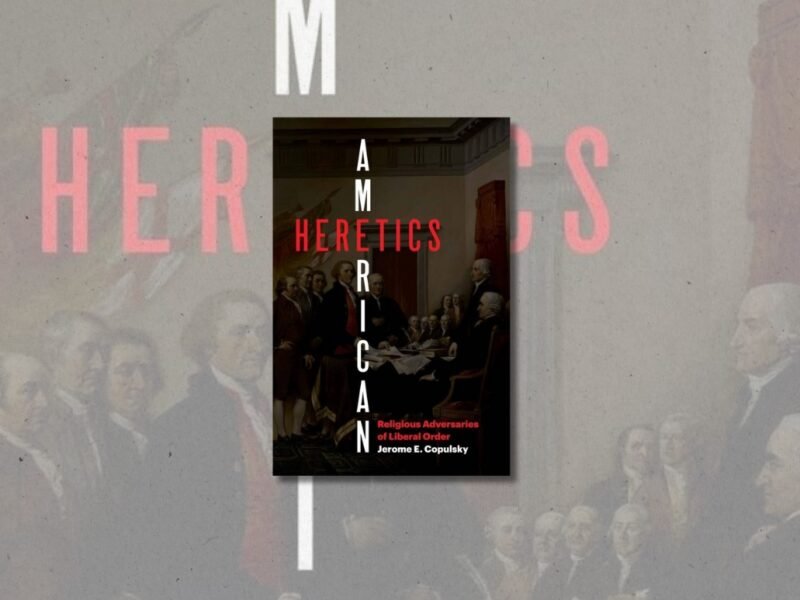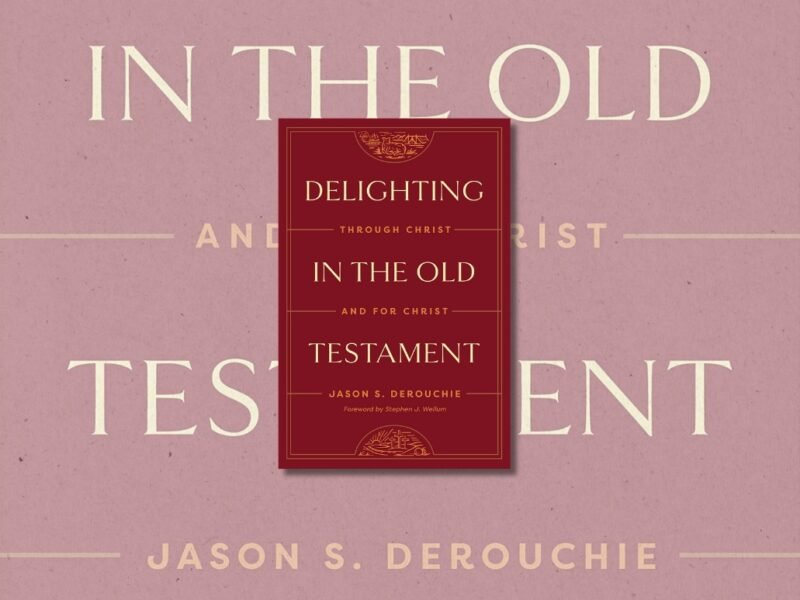A Hymnal of the Heart. Nashotah, WI: Nashotah House Press, 2022. 150 pp. $9.85 (cloth); $3.35 (paper).
When I was first asked to review Nashotah House Press’s pocket hymnal—A Hymnal of the Heart—I was admittedly unsure where to begin. As I mentioned in my review of Nashotah’s A Catechism 1604 Redux, “I am often intimidated by ‘Book Reviews’ because I believe that such a review would need to be at the very least twice the length of the text in order to be a faithful evaluation.” Not to mention, what could someone like myself—with absolutely no musical training—have to say about a hymnal? Gun to my head, I promise that I could not give you the history of a single hymn or tune used in this compilation. However, after taking a moment to flip through the small volume my fears were set at ease. This book, “created by some Anglican Priests in the Year of our Lord 2022,”[1] was not made with choir directors and musical aficionados in mind. No, it was created for someone much like myself. “Of the making of hymnals, there is no end,”[2] jokes the Introduction, but what sets this particular book apart? The fact that its aim is simplicity and brevity, and—I would argue—inclusivity. You do not have to be Asaph or a Son of Korah to use the thing.
The Introduction informs us that it is chiefly a response to John Aher’s 2021 essay “The Case for Shorter Hymnals” published by Theopolis. John is currently a graduate student pursuing a PhD in musicology from Princeton University, and in this essay he argues—as the title implies—that hymnals must be much shorter than we are used to:
We should have hymnals of, at most, 100 hymns…. Shorter hymnals capture the essence of what a hymn is for…. Your entire hymnal should be memorizable by your congregation…. Biblically, to know something is to memorize something.[3]
The goal of A Hymnal of the Heart, then, is to put together no more than 100 hymns which can be easily memorized by the singer: “These 100 hymns represent the core of the English hymn tradition.” Now, I am not qualified to speak on what constitutes the core of the English hymn tradition. What I can say with confidence though is that with only a few exceptions, I recognized just about all of the hymns contained in this little book. What’s more, because I recognized the hymns I had no trouble singing them despite my inability to read music. I could clumsily follow the bars up and down in pitch until I recognized the tune. If my familiarity is any indicator, these hymns are indeed some of the “richest, most sing-able, and dearest to the heart of the Anglican patrimony.”[4] I believe therefore that A Hymnal of the Heart is a faithful response to John Aher’s essay: it can be used by all.
Unskilled singers like myself will be pleased to find that only the melody line is provided for any given hymn, and only the first stanza is noted with the rest in poetry form. This is to aid those who are not familiar with musical notation while providing some for those who are. I believe that this is a better method than is done by many pew Hymnals here in the Church of England, which go without musical notation altogether.
The only feature that gave me pause was that composers and publication dates are not listed. At first glance while flipping through the book I thought this was an oversight. I later came to find that this information was intentionally omitted. The Introduction states: “The authors of the hymns, as they stand in the nearer presence of God right now, singing to him, would certainly be dismayed if we were to give one iota of attention to them, rather than the Lord they sought to adore in their song.” I was immediately reminded of the words of Holy Mr. Herbert:
All worship is prerogative, and a flower
Of his rich crown, from whom lyes no appeal
At the last houre:
Therefore we dare not from his garland steal,
To make a posie of inferiour power.
In this regard, A Hymnal of the Heart is precisely what it claims to be. It is a resource for training the heart in devotion to God and God only. Any information beyond what is needed to worship has been thoughtfully removed. Though I should say that for those who may want to learn the name, date of publication, or tune of any hymn can easily do say with a quick Google search. None of the hymns is obscure in the least, and the tune names are listed in the back appendix.
The parish priest will also be pleased to know that all of the tunes and text are in the public domain. There is no need to tediously source permissions for use in Sunday worship or printed bulletins. The copyright page states:
All of the hymn texts and hymn tunes contained in this hymnal were captured from the public domain. This hymnal, as a composite, is gifted to the public domain. No profit was made on the production or sale of this hymnal.
Any and every parish or individual may use this hymnal without fear of copyright infringement. It is an odd thought that our worship may lead to a lawsuit, but alas, here we are. It is a shame that this was a necessary condition for a hymnal, but I am glad nonetheless that it was taken into consideration!
The hymns themselves are divided between Daily use, the Liturgical Year, Communion, The Church, Consolation, and Praise. There are also four blank pages for additional hymns if the user has some favorites that may be missing from the collection. There are six Daily hymns which are divided between morning and evening. The Liturgical Year has forty-seven hymns divided between Advent, Christmas, Epiphany, Lent, Palm Sunday, Maundy Thursday, Good Friday, Easter, Ascension, Pentecost, Trinity, and All Saints & Holy Days. There are seven hymns for Holy Communion. The six hymns allocated for The Church are divided between The Church Miltant, The Church’s Mission, and The Church Triumphant. There are five hymns for Consolation. Lastly, there are twenty-eight hymns set aside for Praise. Apart from these divisions, the hymnal gives very little direction. The user is free to do with the material what they choose. There is a suggested use in the front of the book which sketches out when in a service a hymn is traditionally used, but it’s merely a suggestion.
In conclusion, I think that for a pocket hymnal, A Hymnal of the Heart has quite a bit to offer. No doubt church planters with slim budgets for musical production will find it a welcome resource that lends itself to choral, a cappella, and *shudders* “contemporary” worship alike. It is also useful for the laity who may want something small to supplement their praying of the Daily Office. No matter how large or small the musical need is, I believe that the thought and care that went into arranging this little hymnal has afforded it the capability of meeting the need. It really is a labor of love to the greater worshipping body.
Notes
- A Hymnal of the Heart, Title Page. ↑
- Ibid, Introduction. ↑
- John Aher, “The Case for Shorter Hymnals,” quoted in A Hymnal of the Heart, Introduction. ↑
- Description on Publisher’s Page. ↑







'Book Review: “A Hymnal of the Heart”' have 4 comments
July 8, 2022 @ 4:03 pm Ralph W. Davis
It’s a shame it doesn’t have 4 parts….as a lot of us CAN read music–and singing only the melody, to me, makes a hymn boring. The melody is always the top notes–so it’s easily read even by the musically-challenged. WHY MUST MODERNS DUMB THINGS DOWN?
July 8, 2022 @ 4:19 pm Brandon LeTourneau
That’s Post-Moderns, to you sir.
July 9, 2022 @ 2:35 pm Ben jefferies
Bonhoeffer would also like to disagree — or rather to agree and double down: to call a feature what you call a bug. From his ‘life together’:
“Because it is bound wholly to the Word, the singing of the congregation, especially of the family congregation, is essentially singing in unison. Here words and music combine in a unique way. The soaring tone of unison singing finds its sole and essential support in the words that are sung and therefore does not need the musical support of other voices.
…The purity of unison singing, unaffected by alien motives of musical techniques, the clarity, unspoiled by the attempt to give musical art an autonomy of its own apart from the words, the simplicity and frugality, the humaneness and warmth of this way of singing is the essence of all congregational singing…. This is singing from the heart, singing to the Lord, singing the Word: this is singing in unity….
Unison singing, difficult as it is, is less of a musical than a spiritual matter. Only where everybody in the group is disposed to an attitude of worship and discipline can unison singing, even though it may lack much musically, give us the joy that is peculiar to it alone.“
Simplicity that creates ease of access for the less musical, also has its own theological value. I.e. this was not made as a “let’s dumb this down” project.
July 21, 2022 @ 7:22 am Rhonda C. Merrick
And if these are all such common, familiar hymns, many singers would know the harmonies, or mostly know them. Should they not sing them? I agree, put them in the book. Also, let\\\’s bring back some of those wonderful shape-note hymns.